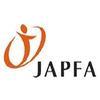Explore all the information on
Swine management
Pig production is the systematic rearing of pig breeds on scientifically based management principles for economic benefit. The main objectives of pig production are to provide consumers with pig meat and related products and to generate income for farmers.
Pig production plays a significant role in the livestock industry, providing an important source of protein and other valuable products. The systematic approach to pig rearing ensures that the pigs are healthy and well-cared for, which in turn leads to better quality products and higher yields. The focus on scientific principles and efficient management helps to reduce waste and increase profitability for farmers.
A swine producer who masters the art of good management has excellent profit opportunities. This is especially true with disease prevention and control. A healthy herd of good-growing, quality breeding animals — adequately fed and housed — provides maximum profit opportunities for the owner who does not over-spend for facilities and/or feed.
Ken Stalder (Iowa State University) talked about the different values taken into account, during this Swine It interview with host Laura Greiner....
Comments : 0
Recommendations: 0
Jay Johnson (USDA) discussed recent concerns regarding the impact of heat stress, in this Swine It interview with host Laura Greiner....
Comments : 0
Recommendations: 0
Jay Johnson (USDA) shared his opinion regarding this resource and its value, in this Swine It interview with host Laura Greiner....
Comments : 0
Recommendations: 0
Issues involving the environment, social and corporate governance in swine production will be highlighted at the event
With the theme "Pork production from an Agribusiness perspective", the sixth session of the IPVS2022 Pre-Congress, which takes place on June 21st at the RioCentro, Rio de Janeiro (RJ), will address issues involving environmental, social and corporate governance (ESG), as a link between science and the demands of the global...
Comments : 0
Recommendations: 0
Authors should pay attention to the results that will be released soon
Recognized worldwide as one of the main showcases for swine research, the IPVS2022, which takes place from June 21st to 24th, at the RioCentro, Rio de Janeiro (RJ), informs the scientific community about the final phase of the abstracts’ evaluation to be presented at the event.
To follow the conclusion of the reviewers, authors should pay attention. "Soon we will...
Comments : 0
Recommendations: 0
There are several different genetic technologies that have been used to improve trait performance for pig farmers. Some examples would include: a) Terminal Cross Mating System: this is simply using a crossbred female composed of breeds that are best for reproduction as the maternal line animals. The most common examples are the use of a Landrace/Large White F1 female as the parent female. This allows the best breeds for reproduction to exert...
Comments : 1
Recommendations: 2
Introduction: The purpose of this study was to demonstrate the economic benefit and improved yield of groups of gilts vaccinated with SUISENG®, on a farm with a high prevalence of neonatal diarrhoea caused by E.coli/Clostridium . Materials and Methods: 49 clinically healthy, PRRSV-positive and ADV-negative gilts were selected on a farm with 800 sows, and divided into 4 groups, 2 vaccinated (V1 n=13; V2 n=12) and 2 not vaccinated (NV1 n=12;...
Comments : 0
Recommendations: 1
Introduction As many production systems are transitioning from individual gestation stalls to different styles of group housing, there are new challenges for data collection in the gestation barn. Commonly referred to as electronic sow feeders (ESF), computerized feeding stations have been available for more than 30 years as a method used to control the variability of sow intake (Trottier and Johnston, 2001), and now are becoming a powerful tool for sow...
Comments : 0
Recommendations: 0
1. Introduction With increasing public awareness regarding pig welfare, gestating sow housing systems are currently changing around the world to group-housing. While the legislation on sows’ group-housing was adopted in 2001 in Europe, the new Canadian regulation was enacted in 2014. The Canadian Code of Practice for the care and handling of pigs requires that all newly built facilities or those undergoing renovation must house sows in groups during gestation, or provide...
Comments : 0
Recommendations: 0
INTRODUCTION The selection of animals for improved production traits has been, for a long time, the major driver of pig breeding (1, 2). More recently, because of the increasing concern with environment, new selection criteria have been explored, such as nitrogen (N) or phosphorus (P) excretion, which are related to both feed efficiency and environmental impact (3). Residual feed intake (RFI) was also proposed as a possible selection criterion to simultaneously improve feed...
Comments : 0
Recommendations: 0
Introduction The present work addresses the use of data in improving decision making and farm productivity, one of the aspects that has generated more interest in swine production in recent years. In the current review, the limitations of data management and recently developed strategies in this sector have been revised, together with the need for new technologies and their use in the evolution of the precision livestock farming concept. The importance of traditional...
Comments : 0
Recommendations: 0
Introduction Domestic animals are considered to be sentient and endowed with cognitive and emotional abilities. The fact that domestic animals can experience emotional states has resulted in developing methods for welfare assessment and monitoring. However, animal welfare legislation often focusses on housing and management conditions and less on how people behave and interact with them. Yet humans can influence reactions of animals towards them and affect their behaviour...
Comments : 0
Recommendations: 0
Introduction Porcine Cytomegalovirus (PCMV) belongs to the β-herpesvirinae family and, despite being species-specific, it shares homology with cytomegaloviruses of human and other animals [1]. PCMV infection is usually subclinical in older pigs, but similar to the human cytomegalovirus, it can cross the placenta and often produces mummification, abortion, low viability of piglets at birth and consequential pre-weaning mortality [2]. In susceptible herds, the virus...
Comments : 0
Recommendations: 0
- Victor Ochoa Calderón, General Manager of Granjas Carroll, Mexico, will address the theme "Sustainable pork production in the era of climate change," during the event.
- Technologies that provide the reduction of waste, technology for treating effluents and possible applications of biogas are an increasingly emerging demand in search of productive sustainability in pork production.
- The event will be held on September 7-9, 2022, in Orlando,...
Comments : 0
Recommendations: 0
Introduction Due to considerable changes in the pig industry worldwide in favour to groups-housing systems, understanding social behaviour of pigs and its impact on welfare has become increasingly important. The wild counterparts of pigs are highly gregarious and form complex hierarchical structures of multigenerational and matrilineal social units centered around several philopatric females associated with their cohorts of offspring [1,2]. Despite occasional breakdown in...
Comments : 0
Recommendations: 0
Introduction The “Five Freedoms” (FAWC, 1993) are used widely as a framework for the assessment of animal welfare and the basis of much legislation for animal protection. Whilst not all Freedoms receive universal agreement, “Freedom from pain, injury and disease” is accepted as important by all stakeholders. Pain can be defined as “an unpleasant sensory and emotional experience associated with actual or potential tissue damage” (IASP, 1979)....
Comments : 0
Recommendations: 0
INTRODUCTION Several factors influence piglet performance after birth. In general, pig producers aim at heavy birth and weaning weights because they are associated with better performance during subsequent rearing phases. This association was first described in the 1980s by Powell and Aberle (1980) and has been recently studied and discussed in the literature. However, Surek et al. (2014), working with litters of 11 piglets each standardized by birth weight, observed that...
Comments : 1
Recommendations: 1
Introduction Sow longevity is defined as the time elapsed from gilt entry into the breeding herd until removal as a result of culling or death. Increasing herd retention rate is important to maximize sow lifetime productivity. Higher removal rate implies an increase in the percentage of young females in the herd, a category with lower production potential, and a higher risk of early culling. Systematic gilt replacement is required for genetic gain. Still,...
Comments : 0
Recommendations: 0
One of the most pressing problems that has attracted considerable publicity in the last few years is the prospect of widespread multidrug resistance leading to a breakdown in human healthcare systems throughout the world. The O’Neil report (O’Neil et al 2016), estimates “that by 2050, 10 million lives a year and a cumulative 100 trillion USD of economic output are at risk due to the rise of drug- resistant infections”. The O’Neil report recommends a...
Comments : 0
Recommendations: 0
Introduction While meat production generates food and a livelihood for billions of people around the planet, it is also associated with environmental and health consequences (OECD 2016). Among production animals, chickens and pigs are species of enormous economic importance for humans, with chickens being the most consumed meet source in the world (13.8 kg/capita in 2016) followed by pigs (12.3 kg/per capita in 2016) (OECD 2016). Given the cultural...
Comments : 0
Recommendations: 0





.jpg&w=3840&q=75)















